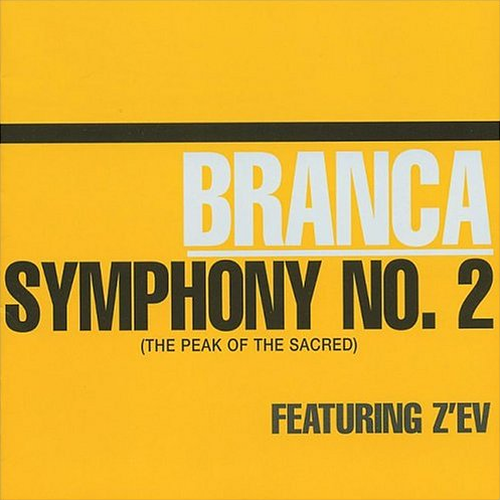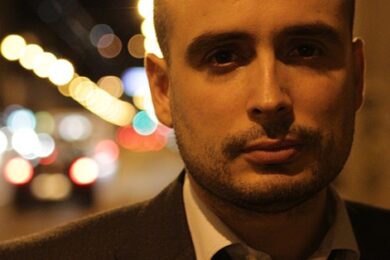13. Glenn BrancaSymphony No. 2 (The Peak Of The Sacred), featuring Z’EV

I got into Glenn Branca through listening to Sonic Youth and Swans, especially as Messrs Moore, Ranaldo and Gira were all part of his guitar ensemble. There are some staggering Branca records out there including Lesson No. 1 and The Ascension and the first three symphonies. It’s hard to pick a favourite amongst those, but Symphony No. 2 wins by a feral whisker. I’m quite drawn to music that has a drone element to it for want of a better word. I love Organum, but the proper bounty of minimal/drone music is to be found in the US, especially New York. Tony Conrad, John Cale, Angus MacLise, Charlemagne Palestine and La Monte Young (even though the myth became tiresome what with trying to track his music down) all made exceptional music, but then Branca came along with a spikier and more nihilistic sensibility almost two decades later. His music was the ultimate in high art seriousness pitted against New York scuzz. He also had quite a forbidding persona, which was part of the attraction. It wouldn’t surprise me if he’d confiscate your guitar if you played a bum note.
Had Henry Purcell lived in the Lower East Side in the early 80s, his funeral music might have sounded similar to Symphony No. 2. In fact, both Branca’s piece and Purcell’s Music For The Funeral Of Queen Mary begin with the same solemn drum motif. From then on, Branca’s slow guitar chords come wafting out of the gutter, slowly climbing their way up. It’s very stern, rigorous and thorough music, yet despite that, I find it incredibly romantic. There is also an undeniable ecclesiastical reach and there’s this constant push and pull between the heavens and the gutter. Within that, the music exudes enough musk and steam from the streets to generate the horsepower needed to take off after many sustained minutes. It’s the perfect music to listen to on the New York subway first thing in the morning after staying up all night. I remember listening to it on my headphones on the J train over Williamsburg Bridge on the way to Woodhaven and how the unearthly drones of cars going over the metal grills on the bridge felt part of the music.
The whole album is tremendously evocative of a certain period in New York and therein lies its power to fool someone like me who had never even been to America until much later to believe in the authenticity of a sound. I spent my late teens and early twenties in a suburban bedroom in Reading thinking I knew New York by listening to Glenn Branca, The Velvet Underground and Suicide’s first album, but of course I didn’t have a clue. The dark mythology of the city back then certainly gave a wraith-like quality to Branca’s music. That kind of thing can become a dilemma when listening to albums that are linked so intimately to cities or specific places whether explicitly or not. Part of my attraction to Branca’s symphonies or even David Bowie’s Low is their inherent connection to places such as New York and Berlin, which were very exotic and mythical for someone like me. But I still think that to some degree those places only become mythical because of what is created there and not vice versa. I’ve heard of some bands thinking that recording an album at Berlin’s Hansa studios will give their music some kind of stamp of credibility. But sometimes people forget that Low would still be a great album had it been recorded in Grimsby.


